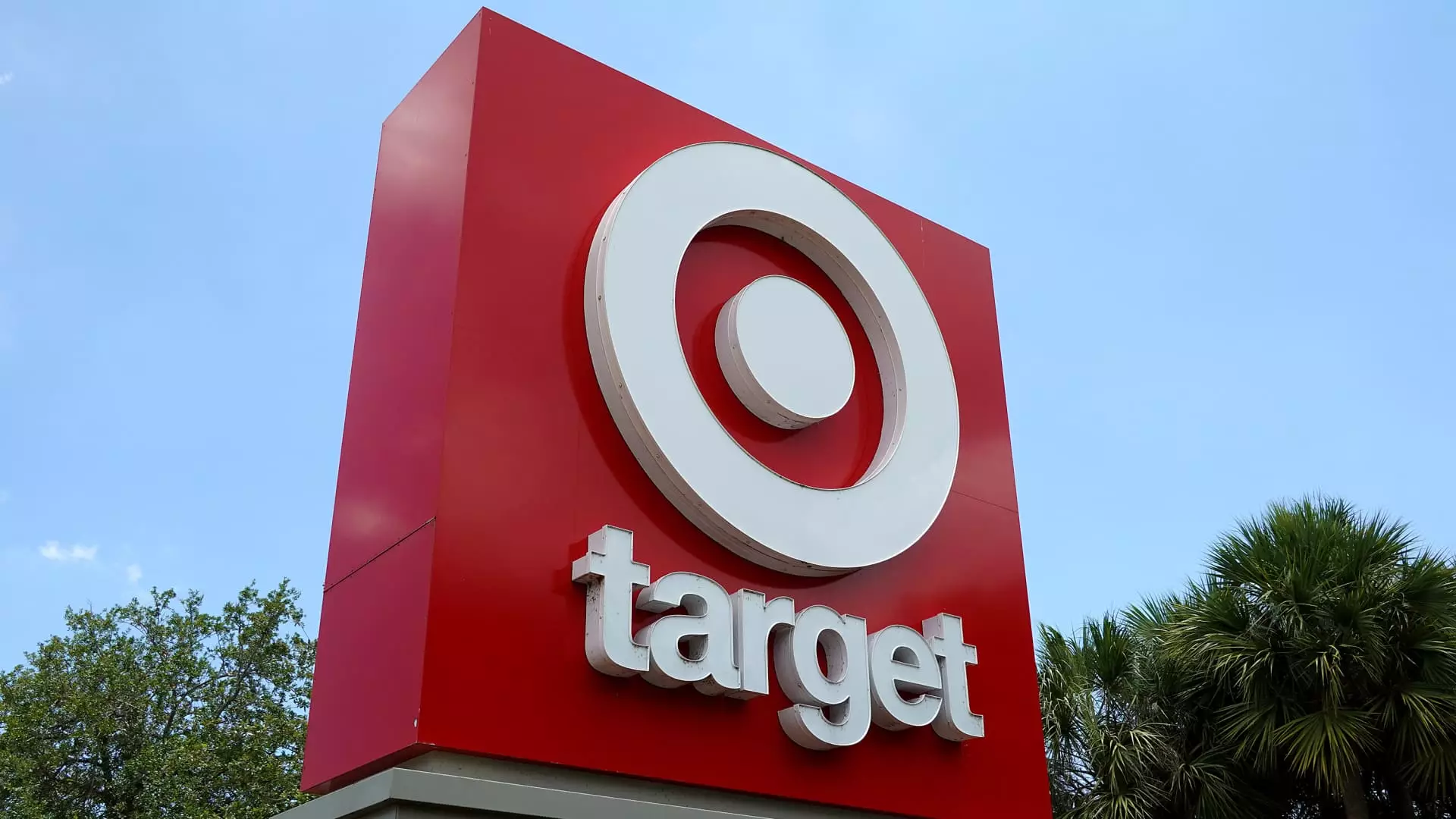Target Corporation, the big-box retailer, has reported disappointing quarterly sales results and has revised its full-year forecast, as it continues to struggle to convince consumers to make non-essential purchases. The company has reduced its expectations for both sales and profit, reflecting concerns about inflation and the economic landscape. Despite better-than-expected quarterly earnings and improved inventory levels, Target’s outlook remains gloomy. This article will analyze Target’s performance and the challenges it faces in the current retail environment.
Target now expects a decline in comparable sales by about mid single digits for the full fiscal year, with earnings per share expected to range from $7 to $8. This is a significant adjustment from its previous forecast of a low single-digit decline to a low single-digit increase in comparable sales, and earnings per share between $7.75 and $8.75. The downward revision reflects Target’s concerns about factors such as rising interest rates, the return of student loan payments, and the persistently high prices of everyday items.
Despite the soft forecast, Target’s shares surged in premarket trading due to better-than-expected quarterly earnings and improved inventory levels. The company reported earnings per share of $1.80, surpassing the Refinitiv consensus estimate of $1.39. Revenue for the quarter was $24.77 billion, slightly lower than the expected $25.16 billion. Target’s strong quarterly performance can be attributed to increased sales and store traffic in July, driven by events such as the Fourth of July and Target Circle Week.
One of the key challenges Target faces is inflation, which is impacting consumers’ purchasing power. The company acknowledges that consumers are grappling with inflation in food, beverage, and household essentials, which is absorbing a larger portion of their budgets. This has led to a shift in consumer behavior towards prioritizing essential purchases over discretionary items, negatively affecting Target’s sales of non-essential products. Additionally, higher inflation rates can lead to consumer uncertainty and reduced spending overall.
Target’s merchandise mix, which includes many fun and impulse-driven items, has become a liability in the current economic climate. With consumers focusing more on essential needs and allocating discretionary spending towards experiences like vacations and concerts, Target’s non-essential offerings have suffered. This is evident in the decline of comparable sales, which fell 5.4% in the most recent quarter. In contrast, Target’s competitor, Walmart, generates over half of its annual revenue from grocery sales, indicating a more favorable merchandise mix.
Target’s struggles to win over shoppers in the face of inflation have taken a toll on its stock performance. As of Tuesday’s close, Target shares had fallen 16% this year, while the S&P 500 rose by 15%. The stock price hit a 52-week low of $124.96, almost halving from its pandemic highs. This reflects investors’ low expectations for the company amidst the challenging retail landscape.
While Target’s sales have declined, the company has managed to rebound in terms of profitability. Net income for the fiscal second quarter rose to $835 million, or $1.80 per share, compared to $183 million, or 39 cents per share, in the same period last year. This increase in profits can be attributed to aggressive actions taken by Target, such as canceling orders, reducing prices, and clearing excess inventory. However, the decline in sales remains a concern. Target’s total revenue for the quarter fell by about 5% compared to the previous year, and comparable sales declined by 5.4%. Digital comparable sales also dropped by 10.5%.
Target acknowledges that this year is crucial for rebuilding its profitability and turning around its sales performance. The company has focused on adjusting its product mix to prioritize high-frequency categories like groceries and household essentials. This strategic shift has helped offset declines in discretionary categories. Additionally, Target has benefited from lower markdowns, reduced supply chain costs, and increased retail prices. However, increased shrink due to organized retail crime has negatively impacted profits.
As Target navigates the remainder of the year, it aims to boost sales by offering affordable prices and aligning its assortment with consumer demands. The company is focused on frequently purchased items and plans to capitalize on major seasons like back-to-school. Target also aims to maintain its successful partnerships, such as Ulta Beauty at Target, which has seen significant sales growth. Despite the challenges it faces, Target remains committed to its long-term strategies and upholding its brand identity.
Target’s recent performance highlights the challenges faced by retailers in an environment of inflation and changing consumer behavior. While the company has reported strong earnings and improved profitability, declining sales and a cautious outlook remain concerning. Target must continue to adapt its merchandise mix to meet consumer needs, control costs, and effectively address inflationary pressures. By staying focused on its long-term strategies and maintaining its commitment to offering value to customers, Target can position itself for future growth and success in a challenging retail landscape.


Leave a Reply